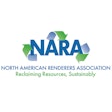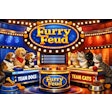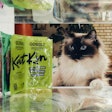
While dog owners worldwide buy grain-free pet food, their motivations may differ from one culture to another. Researchers surveyed pet owners in North America (Canada and the United States) and Europe (France, the United Kingdom and Germany). They found differences among those nations, highlighting opportunities to market pet foods within specific regions. However, the scientists also observed a lack of evidence-based communication among pet owners and pet food makers regarding grains in dog foods.
National differences in grain-free dog food buying
“It was quite interesting for us to see a unique market for grain-free in Germany but not in France,” Sydney Banton, graduate research assistant in animal nutrition at the University of Guelph, said.
Banton led the team that published their results in the journal PLoS ONE. The researchers’ 69 question survey had 3,298 respondents. They used the term no-grain instead of grain-free to avoid pet owners’ previous associations with the words.
Survey respondents who were less likely to select no-grain pet food:
- Were male,
- Lived in France,
- Ranked pet food ingredient quality in the lower quartiles and
- Did not rotate their dog’s diet to provide variety.
Those who were more likely to select no-grain pet food:
- Believed that their dog has a food allergy,
- Followed more than 5 specific dietary routines in their own diet,
- Did not try to include grains in their own diet,
- Got pet food information online or from pet store staff and
- Looked for specific claims on pet food (such as no fillers).
“This is one of very few surveys related to pet food that directly compares purchasing habits between different countries and highlights the different approaches to selecting a pet food in countries in North America and Europe. Pet owners are becoming more interested in highly specific and individualized nutrition for their dogs and the degree to which they want this seems to differ between countries. This idea of specific and individualized nutrition can be applied to marketing.”
However, current marketing of grain-free dog food may mislead consumers, she said.
“Many of them target allergy-related claims despite grains themselves not actually being a major cause of allergies in dogs,” Banton said. “With that being said, grain-free is an alternative option to pet owners and can be marketed as such. It gives owners more options to choose from in the pet store, other than conventional diets. What is important to remember is that the nutrient targets should not be different and given that grain-free diets may be higher in total dietary fiber, supplemental taurine and micronutrients are warranted.”
Taurine supplementation gained attention during the past few years, following U.S. Food Administration announcements related to the agency’s investigation into cases of dilated cardiomyopathy (DCM) correlated to certain grain-free pet foods. Without survey data from before the announcement, it’s impossible to say how public sentiment was influenced, Banton said.
“However, our frequency data of how many people look for grain-free when choosing a pet food compares quite similarly to a study published in 2018 from a small sample of respondents in North Carolina, USA and this suggests that grain-free is just as popular now as prior to the FDA warning,” she said.
Science-based communication about grain-free dog food
Whatever the long-term repercussions of the FDA investigation, consumer motivations for purchasing grain-free dog food may be disconnected from the actual nutritional value of grains or their suitability in dog diets.
“I think there is an urgent need for science-based communication between pet food companies and veterinarians and consumers,” Banton said. “At the end of the day, we have no data that suggests that grains are detrimental to a dogs health and consumers should not be persuaded to believe so. Likewise, we do not yet have a clear link between grain-free diets and DCM or the presence of any one ingredient and DCM. It remains unclear as to whether this is due to ingredients or nutrients.
“We need to make the science behind pet nutrition more accessible to consumers,” she said. “Similar to what was mentioned in the discussion of the paper, I think that creating something similar to the human food guide but for dogs and cats would be a great idea, highlighting the fact that animals require nutrients not ingredients and what nutrients are provided by different ingredients.”
Petfood Forum
Pet food customer demands now follow human food demands, changing which ingredients dog and cat food manufacturers purchase. Pet food ingredient commodity buyers can learn what these future demands might be at Petfood Forum.
Register for Petfood Forum
Petfood Forum brings together pet food professionals from around the world to network, exchange ideas and move business forward with one another and with the industry's leading pet food manufacturers and suppliers.
The in-person and on-demand event delivers the opportunity to learn about pet nutrition and ingredients, global pet food market growth, pet food safety, processing, packaging and more, all from leading, recognized pet food industry experts.














